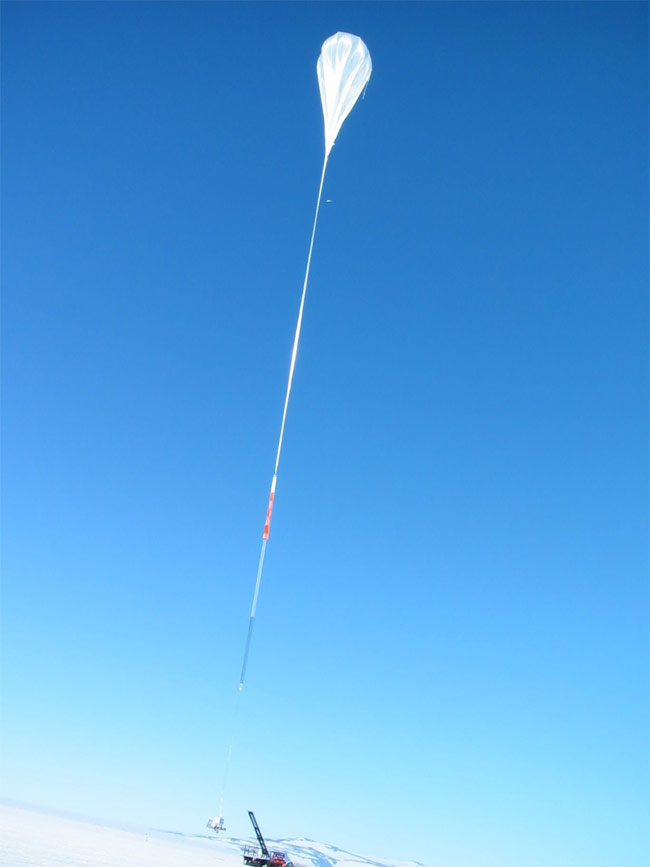Balloon Measures Cosmic Rays Bombarding Earth

A giant balloon made out of a material similar to sandwich wrap was launched from Antarctica Monday (Dec. 20), where it will use its scientific payload to monitor cosmic rays showering down on Earth.
The balloon is part of the Cosmic Ray Energetics And Mass (CREAM VI) experiment, the goal of which is to take direct measurements of the composition of high-energy particles called cosmic rays at energies capable of generating huge air showers. These showers have been observed mainly on the ground. Cosmic rays zip through space at near light-speed and are mainly generated by the shock waves of stellar explosions called supernovas as well as other explosive phenomena in the universe.
The balloon has a volume of about 40 million cubic feet (1.1 million cubic meters). Just two days after its release, CREAM VI is floating 126,000 feet (38 kilometers) above Antarctica.
It is the first of five scientific balloons scheduled to launch from Antarctica in December.
During part of each Antarctic summer, NASA and the National Science Foundation conduct a scientific balloon campaign. The three-month period (December to February) offers unique conditions that make balloon flights like this optimal.
A nearly circular pattern of gentle east-to-west winds that lasts for a few weeks allows the recovery of a balloon from basically the same location from which it was launched, while permitting a flight path that is almost entirely above land. In addition, the near-constant temperature and altitude of the region also help create perfect conditions for stable observations. In other areas of the world, the daily heating and cooling cycles change the volume of gas in the balloon, causing it to rise and fall.
The NASA scientific balloons, made out of a lightweight polyethylene film, fly to altitudes of nearly 25 miles (40 km) and carry payloads weighing up to 6,000 pounds (2,722 kilograms).
Sign up for the Live Science daily newsletter now
Get the world’s most fascinating discoveries delivered straight to your inbox.
Two smaller, hand-launched space science payloads have been flown successfully already. They carried the Balloon Array for Radiation-belt Relativistic Electron Losses (BARREL) experiment, which is geared to find out how and where Earth's Van Allen radiation belts (doughnuts of cosmic rays that produce the polar aurora) interact with Earth's upper atmosphere. These test flights will help scientists prepare for similar flight experiments scheduled for 2013 and 2014.
Next in line will be an experiment called the Balloon Borne Aperture Submillimeter Telescope (BLAST). This balloon will investigate how magnetic fields impede star formation in our galaxy. BLAST's instrumentation and telescope will collect data to make the first high-resolution images of magnetically polarized dust in a number of nearby star-forming regions.
Following that, a super-pressure balloon test flight is scheduled. The 14-million-cubic-foot (396,435 cubic meters) NASA balloon is the largest single-cell, fully sealed, super-pressure structure ever flown. Essentially, there is a slightly higher pressure inside than outside the balloon.
It is twice the size of a similar balloon that was flown over Antarctica for 54 days from December 2008 to February 2009. NASA's goal is to eventually develop a 26-million cubic-foot (736,238 cubic meters) super-pressure balloon, which is about the size of a football stadium.
- Twisted Physics: 7 Recent Mind-Blowing Findings
- Underground Antarctica Experiment Discovers Puzzling Space Ray Pattern
- Top 10 Greatest Mysteries in Science
You can follow LiveScience on Twitter @livescience.









